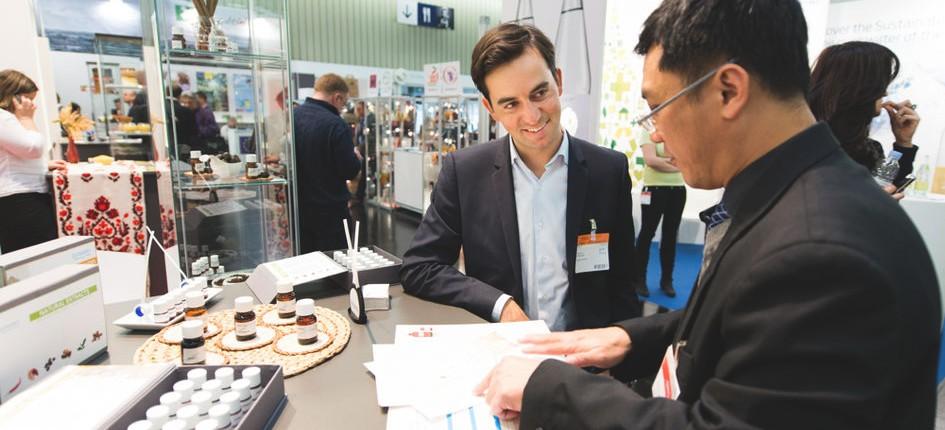Trade fairs in Japan
Trade fairs in Japan are usually not a platform for receiving sales orders or concluding contracts. The trade shows serve first of all for making initial contacts and collecting information. For Swiss exporters, it is about presenting themselves within the well-liked context of Switzerland as a polite (yes, this is important) and high-quality environment, as well as promoting their products & services and nurturing their existing business relationships.
Exhibitors want to provide as many visitors and potential customers as possible with as much information as possible. Visitors focus on collecting information of the specific industry sector, capture industry trends, and discover new products or new business partners. Swiss exhibitors therefore have to set their objectives accordingly, i.e. they should concentrate on market development and the exporter itself and/or its distributor or sales representative must be present at the booth too.
Several of the large Japanese trade shows are also important for Swiss companies to analyze competitors and gain competitive intelligence. Here the organizational part as well as the contacting of potential clients may need to be in Japanese. If you do not have a Japanese partner to rely on for trade fair participation, you may wish to engage Japanese-speaking staff via the Swiss Business Hub Japan.
Pre-show
Plan and prepare your marketing materials well in advance. Although Japan is proud of its high-tech gadgets and advanced robotics, there is no denying, that most Japanese still stick to the paper-based customs (this includes business cards – bring a lot!). That means you will need to plan and prepare your sales and marketing materials, including brochures, handouts and so forth in high-quality and printed form.
Having your marketing materials in Japanese will demonstrate your commitment to the Japanese market. Do not machine translate documents that your Japanese partner/counterpart/client will read. Quality matters.
- Entrance
Trade fair entrance for visitors is generally free in Japan. Please be aware, that you will have to register online in advance for a free participation in some cases. It is best to check the organizer’s site for more details concerning visitor registration procedures, before inviting your clients/partners to a trade fair.
- Schedule meetings at your booth
The most successful trade shows are generally the ones where the team worked together to schedule booth meetings with prospects, customers and partners. To be held either directly at the booth or at meeting facilities of the organizer of the fair.
Tip: Try not to schedule meetings directly at the meeting rooms. People tend to get lost and with bad phone connections you might lose your chance to get in contact with your client. Do market research, identify your potential customers, invite them to your booth by communicating why and how they benefit from your product. In addition, create a shared calendar to give the whole team visibility into the booth schedule so they can see which employees/executives will be available during each day/period of the trade show.
- Be active on social media
Post photos and short reports from the fair on your social channels before, during and after the event. Invite visitors to stop by your booth to enter a contest, take part in trying out your product at a demo or pick up a giveaway. Always be sure to include your booth number and event hashtag so attendees can easily find you.
During the show
Talk to your potential customers individually, collect specific and useful feedback. Specific answers will help you identify what the needs of your Japanese customers are and adjust/improve your product offer accordingly.
- Giveaways
Remember, fun and free presents/giveaways always equal more traffic. Invest extra effort and money to prepare an interesting giveaway or activity to attract attendees. Get creative in your process.
Tip: Everyone loves food. Rent a coffee machine, hand out “after-work beers” or even hire an ice cream truck and invite attendees to come and hang out in your booth. This will help break the ice, opening up conversations and, hopefully, qualified opportunities. Please note: Not all fairs in Japan allow alcohol to be consumed. Please make sure to inform your exhibition partner or the organizer in advance to get their ok.
- Ready, Set, Scan!
The opening day of the trade show, meet with your team 30 minutes before the doors open. Make sure they know the layout of the booth, giveaways and activities to promote. Also make sure they know the layout of the exhibition hall (Where are the lavatories? / Where are the meeting rooms?, etc.)
Demonstrate how to use the badge scanner and let them try it. (In some cases you will be able to use your smartphone and an app, so come prepared with a fully charged device). It is also important to take advantage of the scanners that allow you to type in notes after your conversation. This will help your team with post-show follow-up.
Scan the badge of everyone that stops by your booth – no matter how short. Even if it was just for a freebie. It would be a shame to miss passing a quality lead on to your sales team because they were not scanned.
Post-show
Don’t forget to send a thank you e-mail to all booth visitors, but don’t add them to a high-frequency mailing list just yet – add them to a monthly newsletter first. Make sure to register their response or confirmation of interest in your system. Also, be sure to message them in both Japanese and English, if possible, so you don’t lose any clients due to language barriers.
- Debriefing and follow-up
Schedule a debrief call with your team after the trade show. Write down and document what worked well and possible opportunities for improvement. Did you have a good booth location and enough traffic? Did your social media posts and meeting setup efforts resonate with attendees? These notes will be helpful when determining what to change for the next trade show.
Post-show follow-up is crucial. Make sure all leads are uploaded into your customer relationship management system (CRM) and shared with the responsible sales team members. This data provides insight into visitor traffic, number of leads and opportunities for your business.





